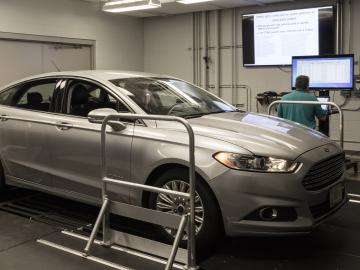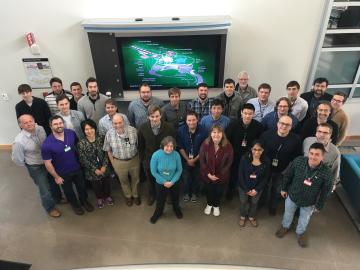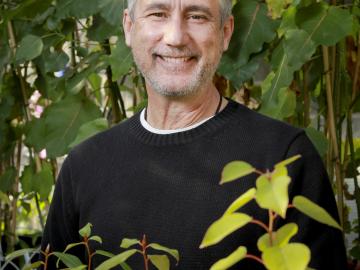
Filter News
Area of Research
- Advanced Manufacturing (4)
- Biology and Environment (25)
- Computational Biology (1)
- Computer Science (1)
- Energy Science (44)
- Fusion and Fission (1)
- Fusion Energy (1)
- Isotopes (1)
- Materials (26)
- Materials for Computing (3)
- National Security (9)
- Neutron Science (13)
- Nuclear Science and Technology (5)
- Supercomputing (26)
News Type
News Topics
- (-) 3-D Printing/Advanced Manufacturing (24)
- (-) Bioenergy (13)
- (-) Biomedical (14)
- (-) Clean Water (3)
- (-) Cybersecurity (7)
- (-) Environment (28)
- (-) Grid (14)
- (-) High-Performance Computing (9)
- (-) Machine Learning (11)
- (-) Physics (14)
- (-) Summit (12)
- Advanced Reactors (13)
- Artificial Intelligence (12)
- Big Data (7)
- Biology (15)
- Biotechnology (2)
- Buildings (12)
- Chemical Sciences (14)
- Composites (4)
- Computer Science (31)
- Coronavirus (18)
- Critical Materials (6)
- Element Discovery (1)
- Energy Storage (35)
- Exascale Computing (5)
- Fossil Energy (1)
- Frontier (6)
- Fusion (7)
- Hydropower (5)
- Irradiation (1)
- Isotopes (8)
- ITER (1)
- Materials (29)
- Materials Science (36)
- Mercury (1)
- Microscopy (11)
- Molten Salt (2)
- Nanotechnology (19)
- National Security (12)
- Neutron Science (30)
- Nuclear Energy (20)
- Partnerships (7)
- Polymers (10)
- Quantum Computing (2)
- Quantum Science (12)
- Security (3)
- Simulation (2)
- Space Exploration (5)
- Transportation (18)
Media Contacts

Researchers at ORNL demonstrated that sodium-ion batteries can serve as a low-cost, high performance substitute for rechargeable lithium-ion batteries commonly used in robotics, power tools, and grid-scale energy storage.

A novel approach developed by scientists at ORNL can scan massive datasets of large-scale satellite images to more accurately map infrastructure – such as buildings and roads – in hours versus days.

Oak Ridge National Laboratory will partner with Cincinnati Children’s Hospital Medical Center to explore ways to deploy expertise in health data science that could more quickly identify patients’ mental health risk factors and aid in

The prospect of simulating a fusion plasma is a step closer to reality thanks to a new computational tool developed by scientists in fusion physics, computer science and mathematics at ORNL.

An international team of researchers has discovered the hydrogen atoms in a metal hydride material are much more tightly spaced than had been predicted for decades — a feature that could possibly facilitate superconductivity at or near room temperature and pressure.

Rigoberto “Gobet” Advincula has been named Governor’s Chair of Advanced and Nanostructured Materials at Oak Ridge National Laboratory and the University of Tennessee.

To better determine the potential energy cost savings among connected homes, researchers at Oak Ridge National Laboratory developed a computer simulation to more accurately compare energy use on similar weather days.

A new Oak Ridge National Laboratory-developed method promises to protect connected and autonomous vehicles from possible network intrusion. Researchers built a prototype plug-in device designed to alert drivers of vehicle cyberattacks. The prototype is coded to learn regular timing...

After more than a year of operation at the Department of Energy’s (DOE’s) Oak Ridge National Laboratory (ORNL), the COHERENT experiment, using the world’s smallest neutrino detector, has found a big fingerprint of the elusive, electrically neutral particles that interact only weakly with matter.

The Department of Energy has announced funding for new research centers to accelerate the development of specialty plants and processes for a new generation of biofuels and bioproducts. The Center for Bioenergy Innovation (CBI), led by Oak Ridge National Laboratory...


